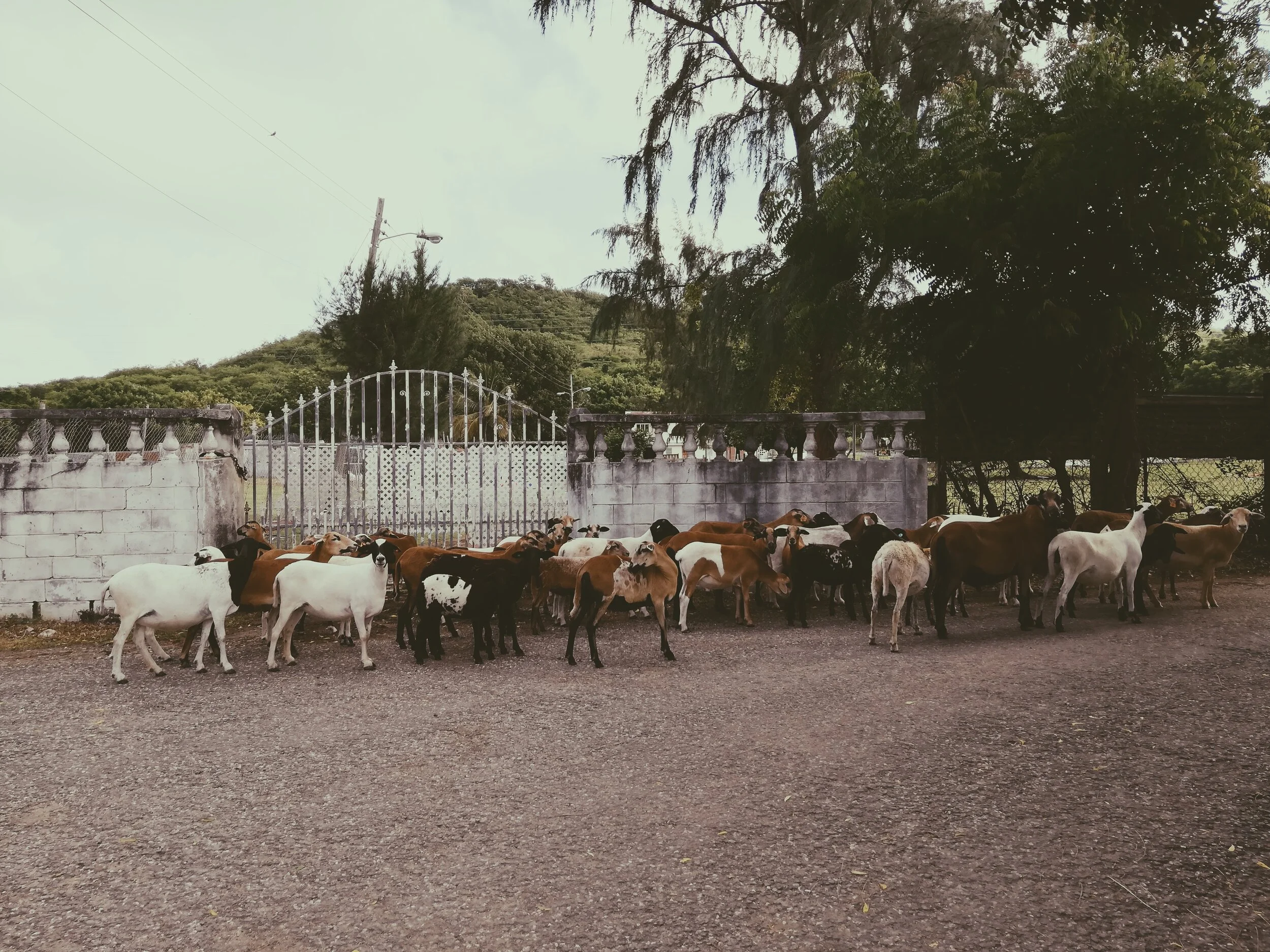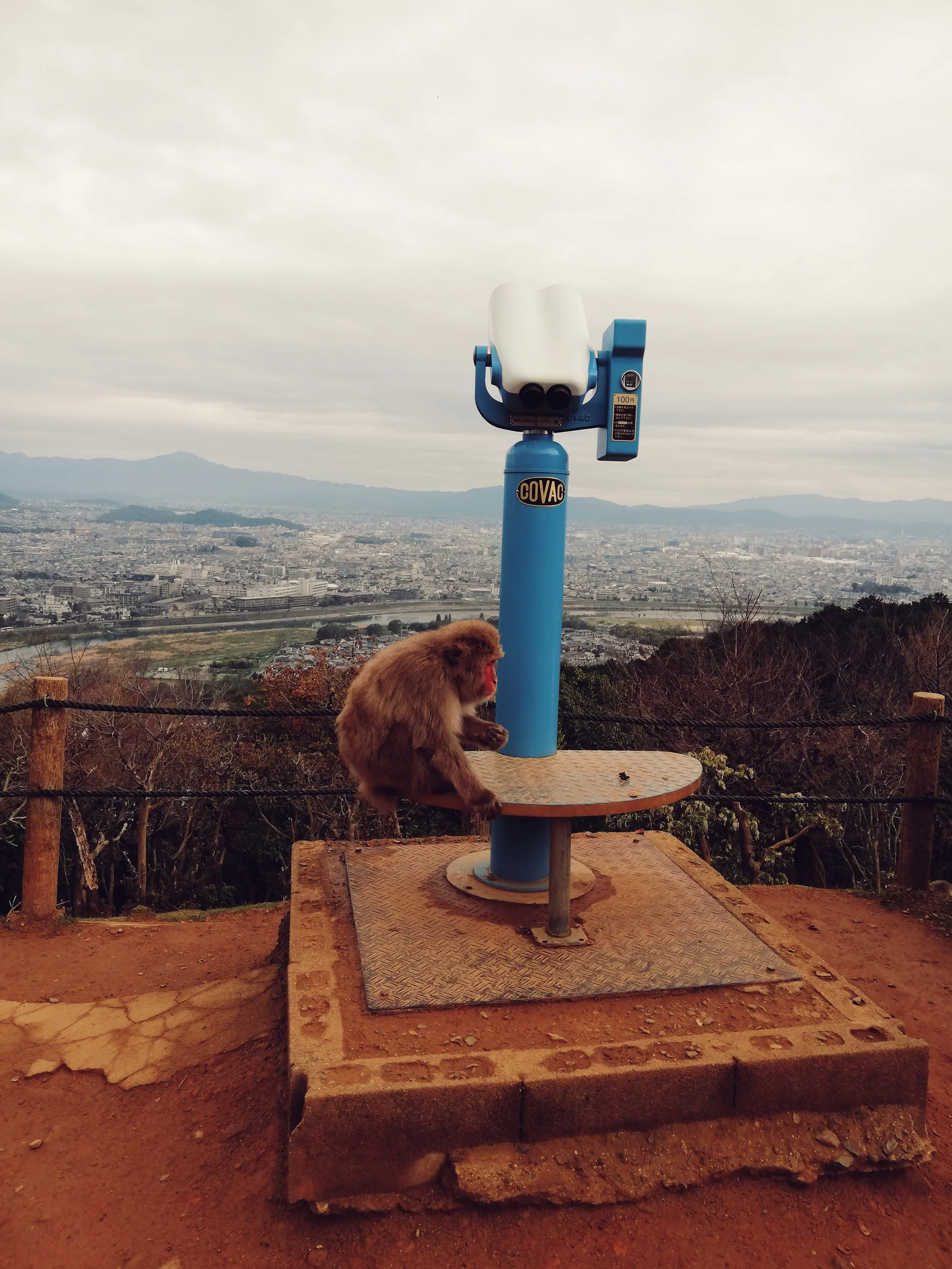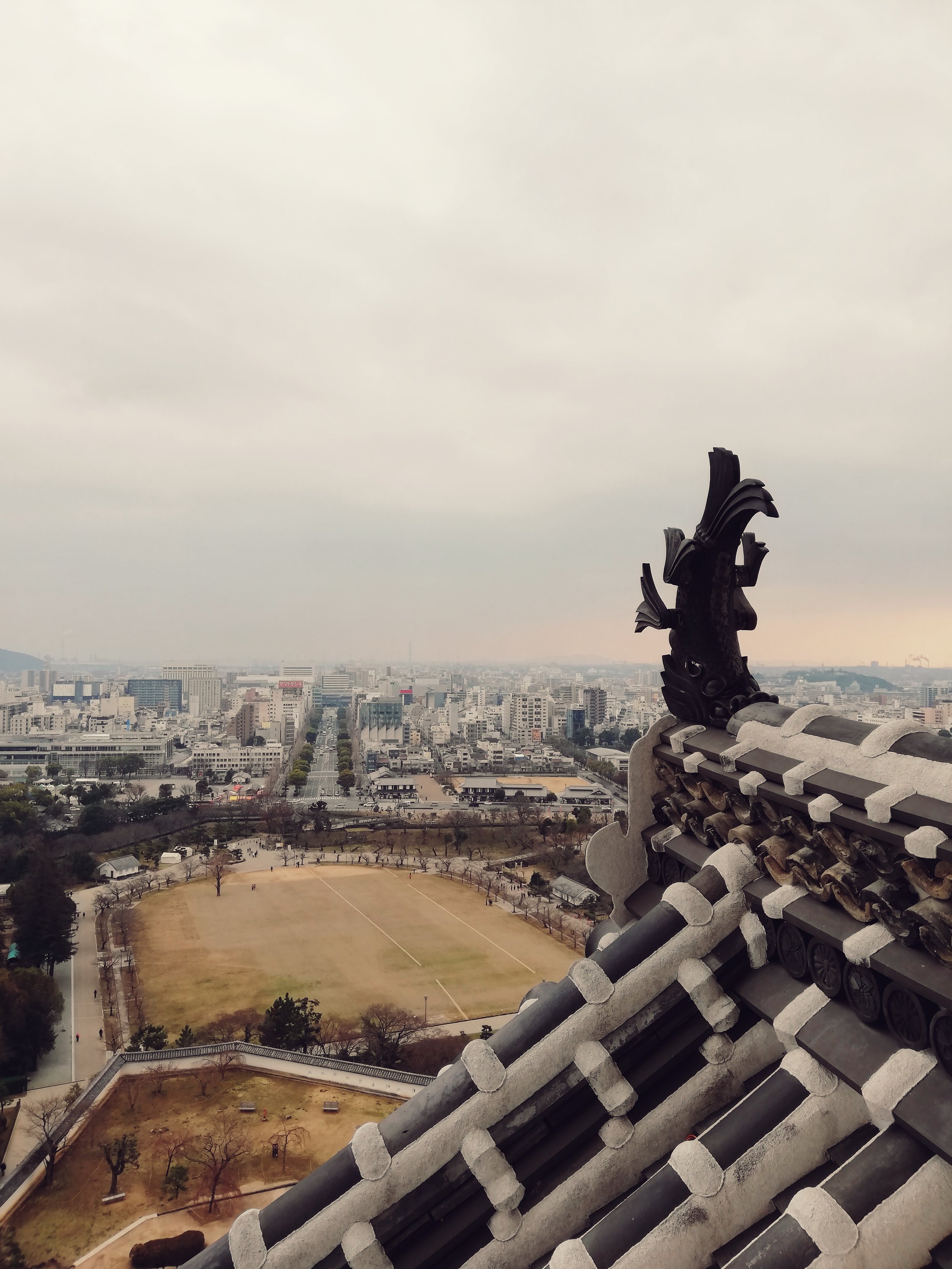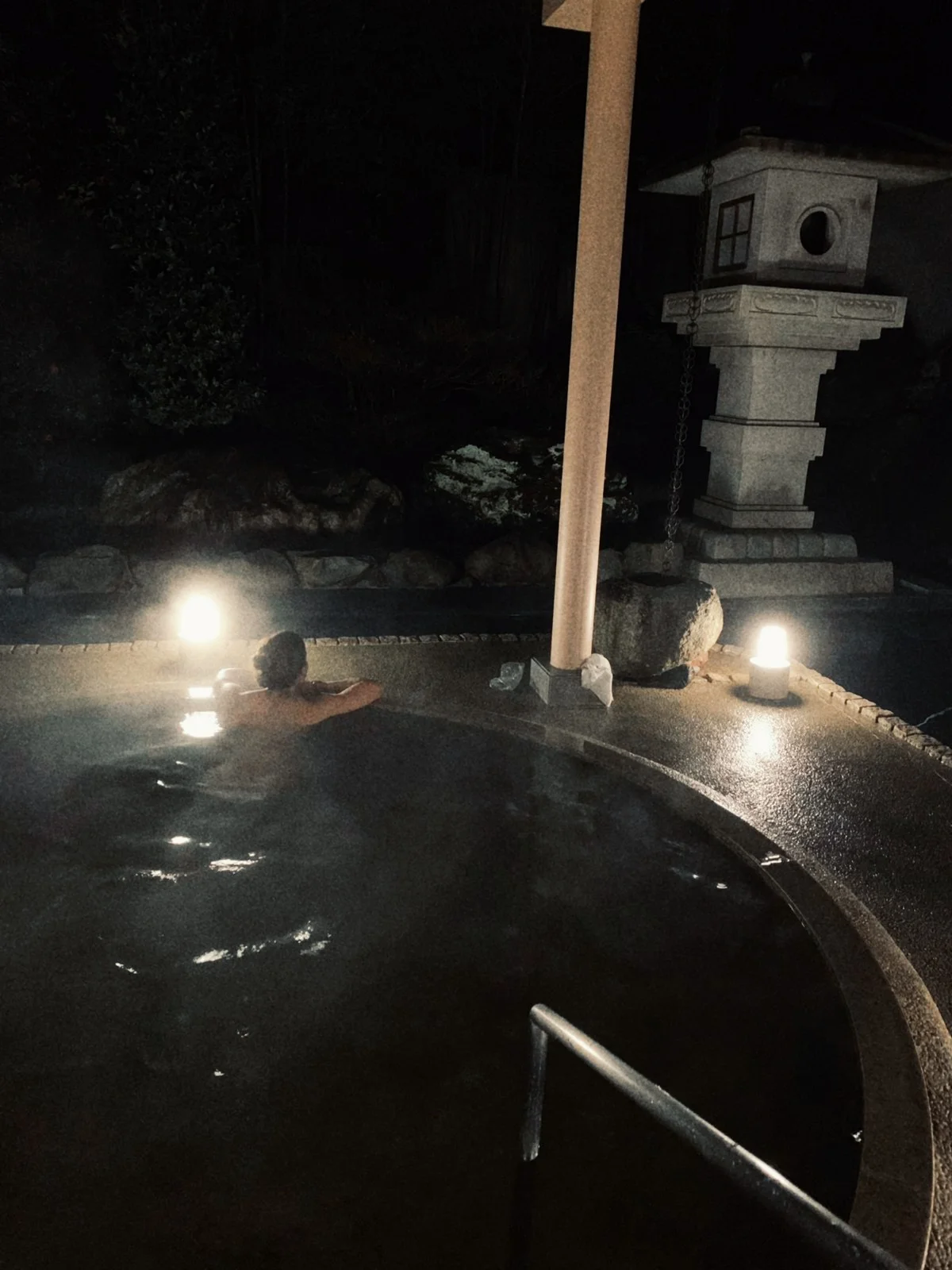Have Yakitori, Will Travel
Helping you gain solid footing in southern Japan’s unique culinary landscape
In an attempt to gain solid footing when we venture to unfamiliar soils, we commit our taste buds to the culinary landscape like it’s a full time job. Eh, maybe something more closely resembling a 45 hr per week unpaid internship. Which always makes any guidance in the palette department welcome to guarantee we’re getting the most bang for our budget.
I definitely gained at least 10 lbs Miss Pac-Manning my way through the streets of southern Japan. And I’m not typically the gluttonous type or what one might consider a foodie. Unless we’re talking about the insatiable alter ego that makes a monthly appearance during my uterus’ 96 consecutive hours of gladiator game carnage. But, exceptions to break the bank for wagyu beef and teppanyaki were made. And inflate ourselves in true American fashion, our group of ten willing tributes certainly did.
The Japanese apply the same levels of diligence and laser-like precision to food as they do architecture or engineering. Japan’s food culture is generous and, thanks to their longstanding geographic and historic isolation, unlike any other in the world.
We got off the Tokyo subway at Roppongi, an illuminated nightlife district of the Minato ward, deliriously jetlagged and famished. A combination that wasn’t conducive to the all night flight and few rounds of hot sake part of our group had staunchly committed to. With a recognizable club scene, Roppongi is a hotspot for travelers that have what my dad refers to as hot feet, or those that can’t seem to stand still long enough to resist the calls of the urban wild. With tanks on empty, we were summoned by the nearest izakaya’s wafting late night fragrance of tako-yaki, which virtuously translates to fried octopus. Takoyaki, or octopus balls, are one of Japan’s most easily recognizable and regularly consumed street snacks. Made of a wheat flour based batter poured into a specially molded pan, one can usually spectate as street cooks stuff them with small servings of octopus tentacles then nimbly poke and flip each ball in its respective cavity. They’re generically topped with tempura flakes, pickled ginger, and green onions and served piping hot to really bring out the aromas.
German photojournalist and BBC contributor Michael Wolf began his pictorial documentation of Tokyo’s subway compression in 2010. With a recent census of 13 million and counting, Tokyo is one of the most densely populated metropolises in the world. And the increasingly cramped quarters shared show most ostensibly on the daily public commute. Wolf’s series of candid portraits documents hundreds of heavily lidded Japanese men and women with cheeks involuntarily pressed against the condensation covered glass panes of the subway. Some create the om mudra with their free hands, in an attempt to create space inwardly when it can’t be found without. Workdays in Tokyo are long and grueling, making portable snacks a staple for folks who are quite consistently pressed for time. Onigiri, or stuffed rice balls, are another undeniably popular and inexpensive go-to available at every convenience store and intermittent izakaya. They’re customarily lightly seasoned with salt and contain fillings ranging from umeboshi, or pickled Japanese plum, to dried bonito shavings and salmon. There’s also no better time to insert a shameless plug about my treasured marital discovery between the East and the West: pizza bao buns. The Japanese took the traditional Chinese steamed bun and injected it with the best thing to ever set sail from the Italian coast in all of naval history. Pizza baos are widely available at the checkout counters of 7-Elevens littered throughout Tokyo’s prefectures. For 120 yen, don’t knock it till you’ve tried it.
When one’s ready to cleanse their street food flooded bowels, they might make their way over to a teahouse. Having high tea at Nakajima No Ochaya Teahouse in the beautifully displaced Hamarikyu Gardens was at the top of my priority list. There will be nothing passive about the time you spend here. Bearing witness to chado or sado, which both translate to the Way of Tea, requires active spiritual observance as the matcha tea is brewed and served with wagashi, or traditional Japanese sweets, by a seasoned host. The choreographed complexity of the Japanese tea ceremony has been cultivated over the course of millennia. And removing one’s shoes before stepping onto the bamboo-matted floor of any chashitsu begs complete removal from the mundane world.
I was pretty satiated after licking the plate of wagashi clean. Much unlike my male travel companions who didn’t require any downtime to respawn and eagerly forked over some spare change for handy skewers of kushikatsu on our way back to the hotel. So much for the palate cleanse. Skewered, battered, and deep-fried meat and vegetables much like tempura are the only details necessary to knowing what you’re biting into. And that was really just the first leg of what proved to be another 3200 meter food relay.
Our undeclared tour guides had plans to meet a friend for dinner nearer their side of town. It was an abrupt “you’re on your own, kids” immigrant parent slap to the face. They expected us to fend for ourselves to find food on our first night out?! With limited comprehension of what we were getting ourselves into at any establishment, we took our chances descending down a narrow side street staircase based off of a set of slightly faded, but tantalizing photos of hot pots and rice bowls. They could’ve been serving kushikatsu’ed toddler toes. We wouldn’t have known any better. Offering a perfect respite from the chilly night air, the booths were built for small, intimate parties and comfortably seated our group of four. The men situated in a neighboring booth were heartily patting each other on the back and cackling like drunken sailors after a long day of dawning too tight suits and ties. One disheveled his colleague’s hair in a fit of unrestrained roars.
I blindly ordered what I assumed to be oyakodon: a filling bowl consisting of the ‘parent and child’ or oyako, which is purely chicken and raw egg, served atop a bed of white rice. To my dismay, a small bowl of white rice topped with a single raw egg was gingerly placed before me and I had no way of correcting my order. Oyakodon is just one of many donburi, or rice bowl, variations served at specialty restaurants. Other popular variants include gyudon (stewed beef), katsudon (pork), tendon (tempura), tekkadon (maguro or bluefin tuna), and kaisendon (raw seafood). Any deviation you eenie-meenie-miney-mo off of a menu will be just as flavorful as it is satisfying.
The following morning, we motioned towards Akihabara for an eight-hour taste of the heart of Japan’s otaku, or diehard fan, culture. Within the last decade, Akihabara has established itself as Tokyo’s central anime and manga district. This small claim to the capital’s sprawling grid is home to hundreds of department buildings, pachinkos, maid and manga cafes, one-man goods stalls, and electronics shops seemingly being held at bay by the main Chuo Dori street. Bright, cartoonish colors, exaggerated billboard animations, and clusters of bodies young and old furiously swiping on their smartphone screens to catch a legendary pokémon that spawned on PokemonGo’s virtual network – but, the middle of a back alley in real time – assured us that we’d arrived at our innocuous destination. Besides too much insight into the crippling sexual repression regularly experienced by young Japanese men after flipping through a manga or two, I walked away from Akihabara with the ultimate prize: Yokohama Kurikoan bakery’s last fresh-off-of-the-griddle Magikarp-shaped taiyaki of the day. The tai- in taiyaki stands for the local seabream species of fish the cake normally resembles while -yaki means baked. It’s much like a waffle and traditionally filled with anko, or sweet red bean paste, but is now just as widely found street side with matcha cream, custard, and chocolaty fillings.
The anime district was the one stop on our map where I’d least expected a childhood dream to come true. But, I guess dreams find you where you least expect them.
With a Japan Rail Pass in tow, you’re granted almost indiscriminate access to the Shinkansens on Japan’s high-speed rail network. A bullet train departs from Tokyo to Kyoto station approximately every 10 minutes, clocking in at an average speed of 200 mph and making whizzing your way across country quite surreal. Ears pop. I sacrificed sleep for sightseeing as we barreled by the countryside and drilled through tunnels amidst the mountains and valleys. We were on the outskirts of the old capital in less than 3 hours. And walking our way towards the Togetsu-kyo Bridge spanning the breadth of Kyoto’s Katsura River in no time. Lunch was served on wooden trays paralleling the river’s banks at Arashiyama Yoshimura, an exceedingly popular soba noodle venue thanks to its NFL drafted coordinates. The nutritious buckwheat noodles are served hot or chilled and presented with a slew of available accouterments like pieces of lightly battered vegetable tempura and tasty broths. Soba is commonly eaten hot in the winter and cold in the summer. The varied broths and sauces offered up alongside soba are traditionally light in flavor to allow the noodles’ natural zest to shine through and avoid competing with the nuttiness of the buckwheat. Our party stocked up on the crucial carbs before crossing the bridge and committing to the climb up to Tenryu-ji Temple and the end-to-end Arashiyama Bamboo Grove.
We hopped on a local shuttle to the edge of town for an evening of exemplary R&R. After a week and a day of traversing Tokyo and Kyoto on foot, it was welcomed. A soak in the bathhouse awaited our shin splints and battered feet as did a kaiseki ryori dinner, which is included in the overall price of any private onsen booking. A kaiseki spread is an elaborate Japanese multi-course meal served to overnight guests for both breakfast and dinner and enjoyed at onsens and many participating ryokans, or Japanese inns. For many, it’s the highlight of their stay. We secured our yukatas and made our way downstairs to a private dining area only after confirming receipt of our invitations. Dinner kicks off with an unvarying glass of shokuzen-shu, or aperitif to clear the sinuses and stimulate the appetite. Appetizers involve bite-sized pieces of somethings prepared at the chef’s discretion and served on a long dish called a hassun, clearly abiding by a much looser criterion than the starter. The main courses are characterized by their cooking method and organized accordingly before each seated guest. They usually include a: soup (suimono), sashimi (otsukuri), boiled dish (nimono), grilled dish (yakimono), deep fried dish (agemono), steamed dish (mushimono), and vinegarized dish (sunomono). That’s right. Individually served. All of these are for you. A post main course spread termed shokuji consists of bowls of white rice, miso soup, and tsukemono, or an indiscriminate range of pickled vegetables. Just in case you’d yet to loosen your yukata’s belt as much as it could suitably go. And with dessert comes a bit of mercy on your gut that may now seem to require unanticipated gastric bypass. Seasonal fresh fruit or sorbet is served to satisfy a lingering sweet tooth and ultimately conclude the first of the meals that never end.
Because the bathhouses are segregated by gender, the guys and gals went our separate ways to digest after dinner. Imagine having to drop your towel and enter a public bath feeling like your stomach looks glaringly distended. Because it is. The only consolation to be found in the fact that we all looked like we were in our third trimesters. Japanese soaking tubs were traditionally built from hinoki, or fragrant cypress wood. The same material used in the construction of the temples. It imbues a sacred and healing element to the act of bathing. Though immersion in hot water also has scientifically validated roots in the promotion of better health. Taking a hot bath is a cardiovascular workout: it dilates blood vessels and improves circulation which, in turn, speeds up healing processes and encourages the body’s proficiency at flushing out toxins.
Soak it all in. Sweat it all out. And prepare yourself for another round of culinary extravagance if you decide to stick around for brunch the following morning. A ryokan breakfast is exclusively savory and chaffs against everything I’d been seasoned to love about breakfast time. The table’s boundless spread will look a little something like this: cooked white rice, miso soup, pickles or tsukemono, grilled fish, tofu, eggs, salad, local seasonal vegetables, natto or fermented soybeans, tazukuri, and hot tea to wash it all down. Tazukuri, as the only semi-sweet element to be found at the table, is a peculiar dish. The thousand-eyed candied baby sardines watch you as you bring the chopsticks down like a pair of expertly wielded spears. Sardines were once widely used as fertilizer across Japanese rice paddies, so the word tazukuri literally translates to “making rice paddy”. And because their utilitarian purpose symbolizes the promise of a bountiful harvest, it is customarily eaten on New Year’s Day.
We rolled our way out of Kyoto and boarded the shinkansen for two hour expedited shipping to the city of Himeji, situated in Japan’s Kansai region. Himeji is internationally recognized for its luminous 17th century hilltop castle of UNESCO World Heritage site acclaim. Himeji Castle, considered Japan’s most beautiful still standing feudal era structure, graces many a post card. Although we took a day to tour the castle’s sprawling complex, we didn’t necessarily come for it. We’d been invited to a traditional sukiyaki dinner by relatives of the Japanese American in our cohort. Seated about the chabudai on his grandmother’s tatami mat, the matriarchs of our friend’s family diligently simmered and served sweetened, thinly sliced beef atop bowls of white rice from a local paddy mixed with freshly cracked raw egg from a nearby farm. Sukiyaki is a dish prepared and served in the nabemono, or one hot-pot style, where the linchpin meat and all accompanying vegetables and glass noodles are usually sautéed together. Everything is shared as complementary dishes and sauce trays complete their orbits around the table. And I don’t know which made the meal more filling: all of the sacrificial sweat that went into preparing it, or the sheer quantity of food consumed. We couldn’t thank them enough for the hospitality if we tried.
Meat consumption in Japan experienced its most significant increase entering the latter half of the 19th century. And the overwhelming amount of izakayas and side street food stalls serving yakitori today can sagely be attributed to it. Yakitori’s literal translation is “grilled chicken.” However, do not let the conversion fool you. The bite-sized pieces of chicken, commonly seasoned with salt or glazed in a tangy, citrusy yuzu sauce, range from grilled breast and thigh, to the gizzard, skin, and other occasionally unidentifiable organs of the bird including the heart. Preparation involves skewering the meat with kushi, a stick typically made of bamboo. The kabobs are then expertly grilled over a charcoal fire and ready to serve. We all intentionally burned our tongues on every skewer licked clean at our Japanese American friend’s local izakaya of choice. Figuring that temporary relief could be found between sticks with just a quick swig of cold sake or Sapporo. The smell alone as the waiter brought out orders of 15 skewers at a time for our party of ten was mouthwatering. Forcing us to proficiently drop about 32000 yen on a criminally good pub meal.
The following morning, melon pan greeted us on a side street for an opportune breakfast before we packed our things and prepared to shove off to the next gastronomic wonderland. No guesswork here. The Japanese sweet bread very un-ironically resembles a melon or cantaloupe. The quick carb was only meant to hold us over while Osaka, a true food capital of the world, awaited.
But, a pit stop we could all agree on required stepping foot on an indentation in human history’s timeline. We expertly squeezed a day trip to Hiroshima into our already tightly packed itinerary to pay homage to the Hiroshima Peace Memorial, or what was originally the Prefectural Industrial Promotion Hall. Every year on August 6th, coinciding with the dropping of the first atomic bomb on the same day in 1945, the city holds a Peace Memorial Ceremony to console the victims of the Hiroshima and Nagasaki nuclear attacks and pray for the realization of lasting world peace. In the evening, hundreds of paper lanterns inscribed with messages of amity and love are deployed along the banks of the Motoyasu River, lighting the way for the spirits of the victims as they’re carried to rest. Something I’d gladly take part in on a return trip.
After processing our own fair share of somber thoughts at the foot of the A-Bomb Dome, we found solace in a restaurant right off of the Peace Memorial Park’s perimeter. There was much comfort to be found in a pan-fried dish and Hiroshima specialty called okonomiyaki. Its base consists of batter and cabbage, while all other ingredients are selected at will and can be anything from octopus and cheese to pork and wasabi. The dish’s shape-shifting ability is reflected in the root of the word’s translation as “okonomi" literally means "to one's liking". Guests are invited to flip and grill their own pancakes on teppans, or iron griddles, at their respective tables in many specialty restaurants. But, to impress upon you that you’d be biting into a pancake is misleading. They’re far from sweet or fluffy. And if you plan on customizing yours from scratch, it’d be wise to ask for a waiter’s input if you’re a generically uninspired chef that thinks ketchup and Uncle Ben’s boil-in-a-bag white rice are complementary.
We picked up our guts and day bags and boarded the train to Osaka. Trickling into the streets of Tokyo’s dirtier relative, Tsutenkaku Tower was the irrefutable X that marked the spot when we thought we’d be hard pressed to find the city’s Shinsekai district before dark. The district’s current layout was developed on the coattails of the 1903 National Industrial Exposition’s success, which brought millions to the neighborhood on short notice. Soon after the expo closed its doors, work began to remodel Shinsekai. It now imitates Paris in its northern half (hence the tower) and New York’s Coney Island in its southern, creating the subliminal sensation that one has just entered a carni town. It has the look and feel of a fairground, but where there would have been a Ferris wheel and other haphazardly maintained rides, there’s more food. Here, conveyor belt sushi and fast and fried delicacies like kushikatsu and takoyaki reign supreme.
We gathered in Osaka’s lively entertainment district the following evening for one last round of hot sake before parting ways with the island nation’s enchantment. Dotonbori is home to a resonant hum of clicking heels, coming alive at night under gaudy neon lights and colossal LED signs. We joined groups of retiring commuters walking the length of the Dotonbori canal. Taking in liberal whiffs of yakitori drifting from open-air food stalls. Our final evening hours in Japan were memorialized at a second story yakiniku restaurant keeled over with full bellies and intoxicated with laughter. Yakiniku means “grilled meat” and refers to grilling bite-sized pieces of the like at one’s table. We ordered just as many rounds of drinks as we did plates Last Supper-styled about the spread. Looking like drunken sailors in need of hearty pats on the back to the neighboring booths. And by the third or fourth round, I think any one of us would have happily gone out choking on a bite-sized piece of beef.







